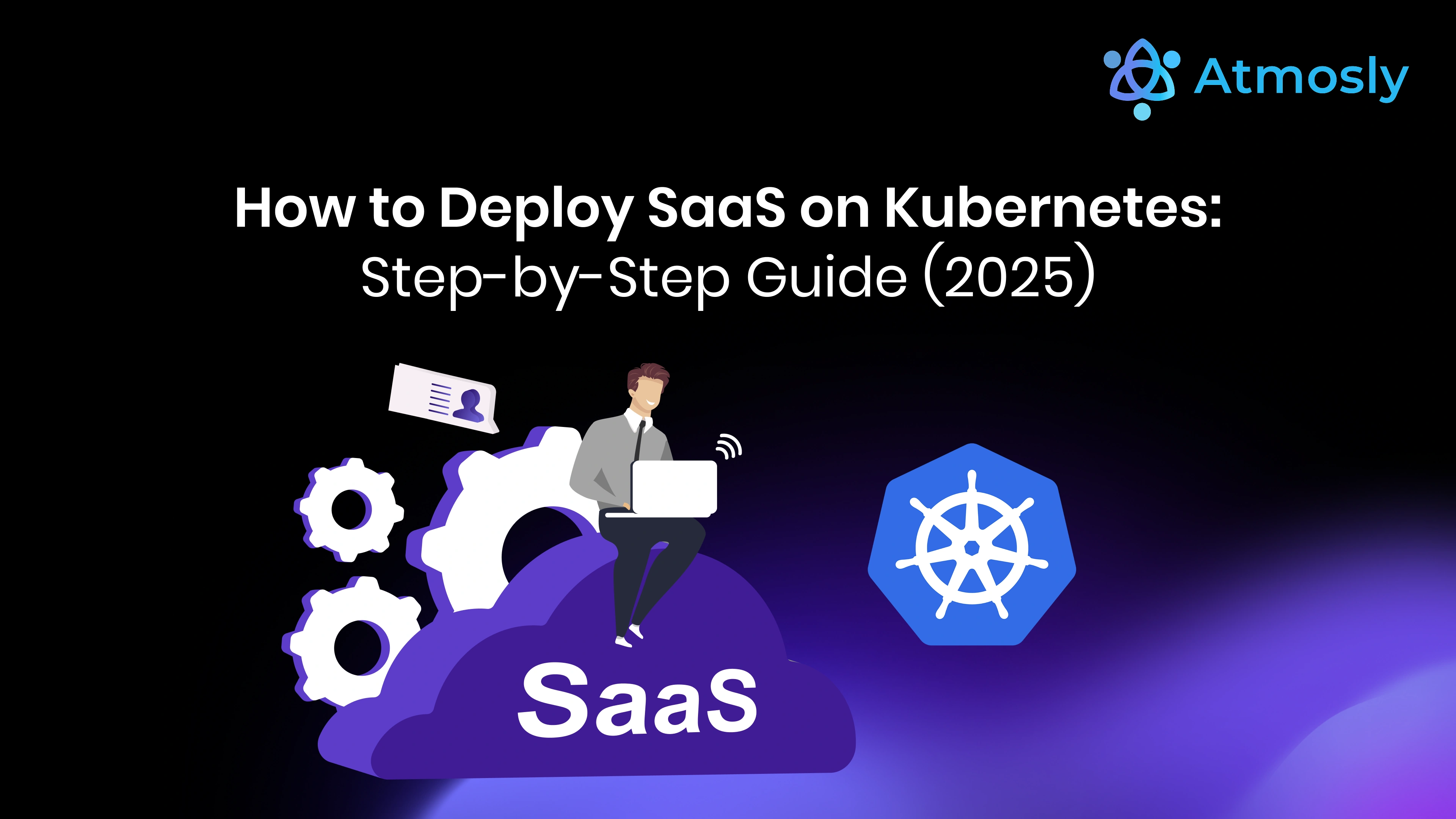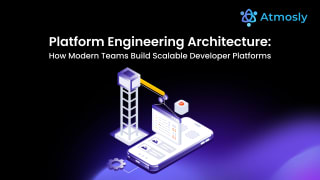The Software-as-a-Service (SaaS) model has become the backbone of modern digital businesses. From collaboration tools like Slack to CRM platforms like Salesforce, SaaS applications dominate the way organizations deliver software. The model’s success lies in its scalability, subscription-based pricing, and ability to deliver services over the cloud without complex installations.
But building and deploying SaaS applications is no easy task. Unlike traditional apps, SaaS products must support multi-tenancy, scale seamlessly, maintain high availability, and ensure strict security compliance. Meeting these requirements with manual deployments or basic infrastructure tools quickly becomes unsustainable.
This is where Kubernetes comes in. Kubernetes, the industry-standard container orchestration platform, provides automated scaling, self-healing, rolling updates, and resource optimization making it an ideal choice for SaaS deployment.
In this comprehensive guide, we’ll explore how to deploy SaaS on Kubernetes, covering:
- Why Kubernetes is the right choice for SaaS.
- Different SaaS deployment models on Kubernetes.
- Prerequisites before starting.
- A detailed step-by-step deployment guide.
- Best practices and common challenges.
- Future trends in SaaS deployment with Kubernetes.
By the end, you’ll have a clear roadmap to architect and deploy SaaS applications on Kubernetes successfully and understand how platforms like Atmosly can simplify and automate the process.
1. Why Kubernetes for SaaS?
Kubernetes isn’t just a buzzword, it's the engine that powers modern SaaS companies. Here’s why it’s the preferred platform:
1.1 Container Orchestration at Scale
SaaS applications are often composed of microservices running in containers. Kubernetes automates container deployment, scaling, networking, and lifecycle management, ensuring services run consistently.
1.2 High Availability (HA)
Downtime is unacceptable for SaaS businesses. Kubernetes ensures high availability by automatically rescheduling pods to healthy nodes, rolling out updates without downtime, and enabling multi-zone deployments.
1.3 Multi-Tenancy Support
SaaS must serve multiple customers (tenants) securely and efficiently. Kubernetes supports namespaces, RBAC (Role-Based Access Control), and resource quotas, which allow isolation and governance across tenants.
1.4 Cost Efficiency
Kubernetes optimizes cluster resources, automatically scaling services up or down. This elasticity reduces over-provisioning and lowers cloud bills, a critical advantage for SaaS companies with fluctuating workloads.
1.5 DevOps Integration
Kubernetes integrates seamlessly with CI/CD pipelines, monitoring, and observability tools. This makes it easy to automate deployments and monitor tenant environments.
1.6 Real-World Examples
- Shopify runs one of the largest Kubernetes clusters to power millions of online stores.
- GitLab deploys its SaaS offering on Kubernetes for scalability.
- Spotify itself built Kubernetes expertise for its global SaaS delivery.
In short: Kubernetes provides the scalability, reliability, and flexibility needed to deliver SaaS applications in today’s competitive market.
2. SaaS Deployment Models on Kubernetes
Before deploying SaaS on Kubernetes, you need to decide how tenants will be structured. The deployment model impacts cost, scalability, and security.
2.1 Single-Tenant SaaS
Each customer has their own isolated instance of the application (possibly their own cluster).
- Pros: Strong isolation, customizable per tenant, easier compliance (HIPAA, GDPR).
- Cons: Expensive to operate at scale.
- Best For: Enterprises with strict security requirements.
2.2 Multi-Tenant SaaS
Multiple customers share the same application instance and infrastructure.
- Pros: Cost-efficient, easier to scale, faster onboarding.
- Cons: Requires strong isolation and governance to prevent data leaks.
- Best For: Startups and SaaS products serving many small-to-medium customers.
2.3 Namespace-Per-Tenant Model
Each tenant is allocated a namespace in the same Kubernetes cluster.
- Pros: Simple to set up, cost-efficient.
- Cons: Requires strict RBAC and resource quotas to prevent cross-tenant interference.
2.4 Cluster-Per-Tenant Model
Each tenant runs in a separate Kubernetes cluster.
- Pros: Strong isolation, easy compliance.
- Cons: High operational overhead, not cost-efficient.
2.5 Shared Cluster with Isolation
All tenants share a cluster, but workloads are isolated via labels, network policies, and quotas.
- Pros: Balance between cost and efficiency.
- Cons: Requires strong governance.
Choosing the right model depends on your SaaS use case.
- Startups often use namespace-per-tenant for efficiency.
- Enterprises adopt cluster-per-tenant for compliance.
3. Prerequisites Before Deployment
Before you deploy SaaS on Kubernetes, ensure you have these essentials in place:
3.1 Kubernetes Cluster
- Use managed Kubernetes services like EKS (AWS), GKE (Google Cloud), or AKS (Azure).
- For self-hosting: tools like kOps or Rancher can manage clusters.
3.2 Containerized Application
- Package your SaaS application into Docker images.
- Follow best practices: small base images, non-root users, vulnerability scanning.
3.3 CI/CD Pipelines
- Automate builds, tests, and deployments with tools like GitHub Actions, GitLab CI/CD, or Jenkins.
- Ensure pipelines include security scans and automated rollbacks.
3.4 Secrets Management
- Use Kubernetes Secrets, HashiCorp Vault, or AWS Secrets Manager.
- Never hard-code credentials in manifests.
3.5 Monitoring and Logging Stack
- Prometheus + Grafana for metrics.
- ELK (Elasticsearch, Logstash, Kibana) or Loki for centralized logs.
3.6 Security Foundations
- RBAC roles for tenant isolation.
- Network Policies for restricting pod communication.
- Image scanning with tools like Trivy or Aqua Security.
Having these prerequisites ensures you’re deploying SaaS on a secure, scalable foundation.
4. Step-by-Step Guide: Deploying SaaS on Kubernetes
Now let’s walk through the deployment process in detail.
4.1 Containerize the SaaS Application
- Write a Dockerfile for each service.
- Use multi-stage builds to reduce image size.
- Push images to a registry (Docker Hub, ECR, GCR).
Example Dockerfile:
FROM node:18-alpine
WORKDIR /app
COPY package*.json ./
RUN npm install --only=production
COPY . .
CMD ["npm", "start"]4.2 Define Kubernetes Manifests
Create YAML files for Deployments, Services, and Ingress.
Example Deployment:
apiVersion: apps/v1
kind: Deployment
metadata:
name: saas-app
spec:
replicas: 3
selector:
matchLabels:
app: saas-app
template:
metadata:
labels:
app: saas-app
spec:
containers:
- name: saas-app
image: myregistry/saas-app:v1
ports:
- containerPort: 30004.3 Implement Multi-Tenancy Strategy
- Use namespaces to isolate tenants.
- Apply ResourceQuotas to prevent one tenant from consuming all resources.
- Use NetworkPolicies to isolate traffic.
4.4 Configure Ingress and Load Balancing
- Deploy an NGINX Ingress Controller.
- Map tenant domains to services using Ingress rules.
Example Ingress:
apiVersion: networking.k8s.io/v1
kind: Ingress
metadata:
name: saas-ingress
spec:
rules:
- host: tenant1.mysaas.com
http:
paths:
- backend:
service:
name: saas-app
port:
number: 30004.5 Set Up Persistent Storage
- Use PersistentVolumeClaims (PVCs) for tenant data.
- For databases: deploy via StatefulSets.
4.6 Implement CI/CD Pipelines
- Automate deployments with GitOps (ArgoCD, Flux).
- Example: GitHub Actions pipeline triggers on code push, builds image, deploys via kubectl.
4.7 Add Monitoring & Logging
- Prometheus collects metrics (CPU, memory, requests).
- Grafana visualizes dashboards per tenant.
- Configure alerts for failures or SLA breaches.
4.8 Secure the SaaS Environment
- Enable RBAC: restrict developers by namespace.
- Encrypt secrets at rest.
- Automate vulnerability scans.
By following these steps, your SaaS application will be production-ready on Kubernetes.
5. Best Practices for SaaS on Kubernetes
- Use Helm Charts – Package YAML manifests into charts for versioning and reuse.
- Enable Autoscaling – Use Horizontal Pod Autoscaler (HPA) to match workload spikes.
- Adopt GitOps – Manage deployments declaratively with Git as the source of truth.
- Perform Canary/Blue-Green Deployments – Reduce release risks by rolling out to small user groups first.
- Optimize Costs – Use cost intelligence tools (like Atmosly) to monitor cluster spend.
- Embed Security Early – Apply shift-left security checks in pipelines.
6. Common Challenges and How to Overcome Them
6.1 Multi-Tenancy Complexity
Challenge: Isolating tenants securely.
Solution: Namespaces + RBAC + quotas.
6.2 Data Security & Compliance
Challenge: Meeting GDPR/HIPAA requirements.
Solution: Encrypt data, audit logs, implement compliance policies.
6.3 Debugging Kubernetes Issues
Challenge: Troubleshooting distributed systems.
Solution: Use AI copilots (e.g., Atmosly AI Copilot) to diagnose failures quickly.
6.4 Cost Management
Challenge: SaaS workloads can waste resources.
Solution: Use cost intelligence dashboards and autoscaling.
6.5 Toolchain Sprawl
Challenge: Managing 10+ tools for CI/CD, monitoring, security.
Solution: Adopt integrated platforms like Atmosly to unify.
7. Future of SaaS Deployment on Kubernetes
The future will bring even more automation and intelligence:
- AI & AIOps: Automated root cause analysis, predictive scaling, anomaly detection.
- Policy-as-Code: Compliance embedded into every workflow.
- Internal Developer Platforms (IDPs): Developer-first experiences.
- Unified SaaS Platforms: Platforms like Atmosly merging Kubernetes management, CI/CD, AI copilots, and cost intelligence.
SaaS deployment is moving toward self-healing, intelligent systems with minimal manual intervention.
8. Conclusion
Deploying SaaS on Kubernetes offers a powerful foundation for scalability, security, and cost efficiency. By choosing the right multi-tenancy model, following deployment best practices, and leveraging monitoring and automation, organizations can deliver reliable SaaS products to customers worldwide.
While Kubernetes provides flexibility, managing its complexity can be overwhelming. That’s why platforms like Atmosly exist. Atmosly combines Kubernetes automation with AI copilots, one-click environment cloning, cost intelligence, and visual pipeline builders reducing toolchain sprawl and making SaaS deployment seamless.
In 2025, the winning SaaS companies will be those who combine Kubernetes with intelligent automation. Atmosly can help you get there.






